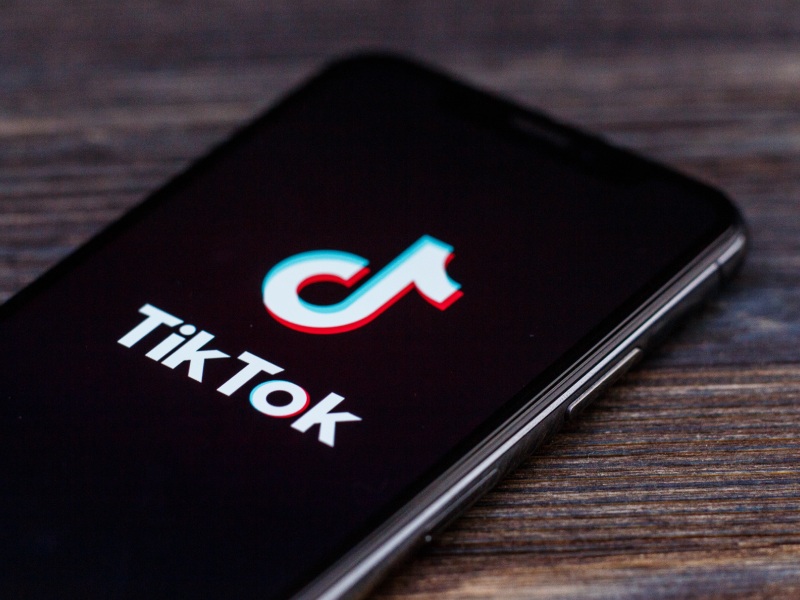You spend hours creating content that your audience should love. You publish it. And nothing happens. No traffic, no shares, and no engagements. Nothing.
How do you prevent this nightmare from happening? People aren’t monitoring your website or other owned channels every hour waiting for your next content piece to be published. They’re already overloaded with the amount of information they get (often unconsciously) every day.
Luckily, there are still ways to put your content right in front of your audience’s eyes. We’re going to list all the content promotion best practices that have proved to be effective for us at Joinative in this article.
Content collaboration
The success of content distribution efforts largely depends on what you’ve done in the content creation phase. Collaborating with niche experts and influencers on future content pieces is the best way to ensure your articles, videos, or podcasts will get traction.
How does it work?
When you mention people or companies in your content, you can expect that they’ll be happy to interact with or even share it on their owned media channels, like social media or blogs.
Here’s a great example of a blog post that Masooma Memon, a SaaS writer, has created for the Serpstat blog in collaboration with thought leaders. The article features 12 experts’ tips for writing great blog posts. After the article had been shared on LinkedIn, it got twice as many reactions and comments as regular LinkedIn posts by Serpstat receive.

To find more people who might want to contribute to your future content, you can submit queries on HARO. The platform connects journalists and experts for free. All you need to do is to create a request, set a deadline, and wait for submissions to drop right into your inbox. HARO sends journalists’ requests in their regular email newsletters at least twice a day.
We’ve already shared one use case of effective content distribution on LinkedIn above. But there are more strategies for promoting your content on the platform.
LinkedIn can bring a lot of benefits for your company, ranging from growing your website traffic to delivering new sales opportunities. And if you don’t have time to stick to a regular publishing schedule, but just plan all your posts a week or two weeks in advance with the help of one of the social media marketing tools. Easy as pie.
Assuming that you’ve already created your company LinkedIn profile, updated with information about your business, and maybe even tried to get some traction there, we’ll move on to top content promotion techniques on Linkedin.
Use LinkedIn polls
Whatever type of content you want to promote, it’s always a good idea to repurpose it for channels that you share it on. For instance, if you’ve published a blog post on how to set up your home office, you can add a poll to your post. Asking people about how they feel about working from home will be enough to catch their attention and encourage them to learn what else you have to say.
Tag companies and people
This step is also implied in the first section about content collaboration, and we’ll just stress its importance. When you mention someone or something in your content, don’t forget to tag the relevant people or companies when sharing the content in your LinkedIn post.
Even if you haven’t interviewed anyone but only linked to a source from another website, you can just give credit to those who (unintentionally) made it to your post. By gaining reactions or even shares from these accounts, you’ll increase the visibility of your LinkedIn posts and reach more people with your content.
Post from your personal account
Having your company account is great, but staying active on your personal social media is even more important.
The statistics show that people are more willing to interact with content published by company employees than content shared by brands.
Turn yourself and other team members into brand advocates. Instead of just leaving your reactions below company updates, share new posts with your personal networks.
Just look at how Meredith Metsker of Stonly has promoted her new blog post through a well-established personal account. It’s also worth mentioning Stonly’s account on LinkedIn usually receives no more than 10 reactions per post. Here you can also see the tactic of tagging thought leaders in action.
Sharing content on the company or personal accounts on Twitter is the next technique that’s worth your attention.
Before you start with content distribution on Twitter, make sure your audience is active on the platform. Check the statistics, find influencers, and see how (and whether) top companies in the niche are building their strategies. In our experience, Twitter is extremely effective in B2B and marketing category in particular.
Below you’ll find a few content distribution tactics that work well on Twitter.
Turn blog posts into Twitter threads
Ryan McCready of Venngage regularly repurposes company blog posts on his own Twitter account in a form of threads:

Create Twitter videos
One more idea that will boost engagements below your Twitter posts is creating videos where you provide a quick preview of the content.
Andy Crestodina is a pro of short and highly-engaging videos that encourage you to click on a link attached and spend your time reading his posts.
While LinkedIn and Twitter are obvious solutions for most brands that only start to explore the opportunities for content distribution, Instagram is often overlooked.
Even though you can’t add clickable links below in-feed posts, you can add them right in your Instagram stories.
Instagram Stories
Share updates about releasing new videos, articles, or any other content on Instagram Stories. To make your stories look more engaging, use a graphic design tool, like Canva or Venngage.
Repurposing your content so that it fits the format and feels more ‘native’ is also important on Instagram. To generate users’ interest in the content that they were sharing, the Mailchimp team created a series of stories where they tell about the idea of the article, share questions, and provide answer previews. Once a user gets hooked, they’ll want to learn more and swipe to read the post.
TikTok
Right, TikTok is no longer a channel for teens. Brands all over the world have recently started to explore it to reach adult audiences, and the results are already satisfactory.
Just craft easily digestible videos based on your original content and publish them regularly on TikTok.
This is how NoGood marketing agency uses TikTok to grow their reach. After publishing educational content on the company TikTok account every few days for half a year, the NoGood team has gained as many as 68K followers and up to 10K views per publication.
If you’re ready to invest in the channel that will transform your digital marketing strategy, you might also want to invest in TikTok advertising. But we recommend that you start with building organic reach first. You’ll be surprised how easy it is to get traction on this platform.
Pinterest is a visual discovery engine. Seven out of ten Pinterest users are women. If you create content on cooking, workouts, fashion, design inspiration, or other topics where visual content fits in, you should use Pinterest for content distribution. By attaching links to the original content below your pins (this is how posts on Pinterest are called), you’ll attract the most relevant audience to your website.
Paid social promotion
None of the above-mentioned tips includes paid social promotion. We decided to highlight it as a separate tactic.
With growing volumes of companies and personal brands competing for attention online, levels of noise and distractions are overwhelming. To get your content discovered by the right audience as fast as possible, you’ll need to incorporate paid promotion into your strategy.
Depending on your target audience, budget, and goals, you can choose to advertise your content on one of the social media platforms. This way, you’ll have guaranteed engagement and traffic.
Paid ads are available on almost every existing social media platform, including giants like LinkedIn, Instagram, Facebook, YouTube, Twitter, and others.
The paid campaign run by WordStream on Facebook.
Native advertising
What’s a better way to promote content than on online magazines and news websites? Native advertising is a technique that makes it possible.
Native advertising involves the use of ads that match the natural form and function of the content of media sources they appear on.
Native ads are displayed within content recommendation widgets on the websites that are parts of this or another native ad network. For instance, if you distribute your content through Taboola’s network, it’ll be served on top-notch websites, like Business Insider and HuffPost.
It’s also a more affordable alternative to paid social promotion. For your native ads to be displayed on quality websites, your bids should start from as little as $0.2 per click. If you decide to serve your content on 2 tier websites, the average CPC will be even lower.
Slack communities
Slack communities where people gather around specific topics are getting more and more popular these days. It’s the best way to connect with people that share your interests without the need to make sense out of all the noise on social media.
Of course, you can’t just join the relevant community and start bombarding people with promotional messages (although it’s a popular technique in large groups). Often, there are channels where members can share their content or updates and ask for feedback. If you find the one in your niche, this will be an amazing opportunity for you to not only put your content in front of the right audience but also to make connections and build trust among people who can become your prospects.
By joining the relevant Slack community and sharing your content there, you’ll reach not so broad but a very dedicated audience.

Quora
Quora is the world-famous Q&A platform, where people ask questions and get answers from other users. By promoting your content on the platform, you’ll gain exposure to Quora’s 700,000+ monthly visitors.
When done right, Quora marketing can bring you large volumes of traffic. Your answers can get picked by internal communities and Quora digest (regular newsletter by Quora), which will definitely boost the engagement and visibility of your content.
Simply look for questions that are already covered in your articles, videos, or podcasts and answer them with a link to the original content.

Email campaigns
Last but not least, email marketing. Even though our inboxes are overloaded with promotions and sales pitches, we still read newsletters that deliver value.
So, if you have content worth sharing, don’t hesitate to build your email list. To get subscribers fast, create a lead magnet (ebook, webinar, templates, freebie) and do paid promotion (paid social or native advertising will with well) first.
After you gain enough signups, you can launch a regular newsletter where your top content pieces will be featured.
Over to you
Whatever content distribution channel(s) you choose, you should stay consistent with your efforts. You can’t judge the effectiveness of the channel after being active on Twitter for a week.
Once you pick a strategy, stick to it, and keep looking for ways to make the most out of it.




















